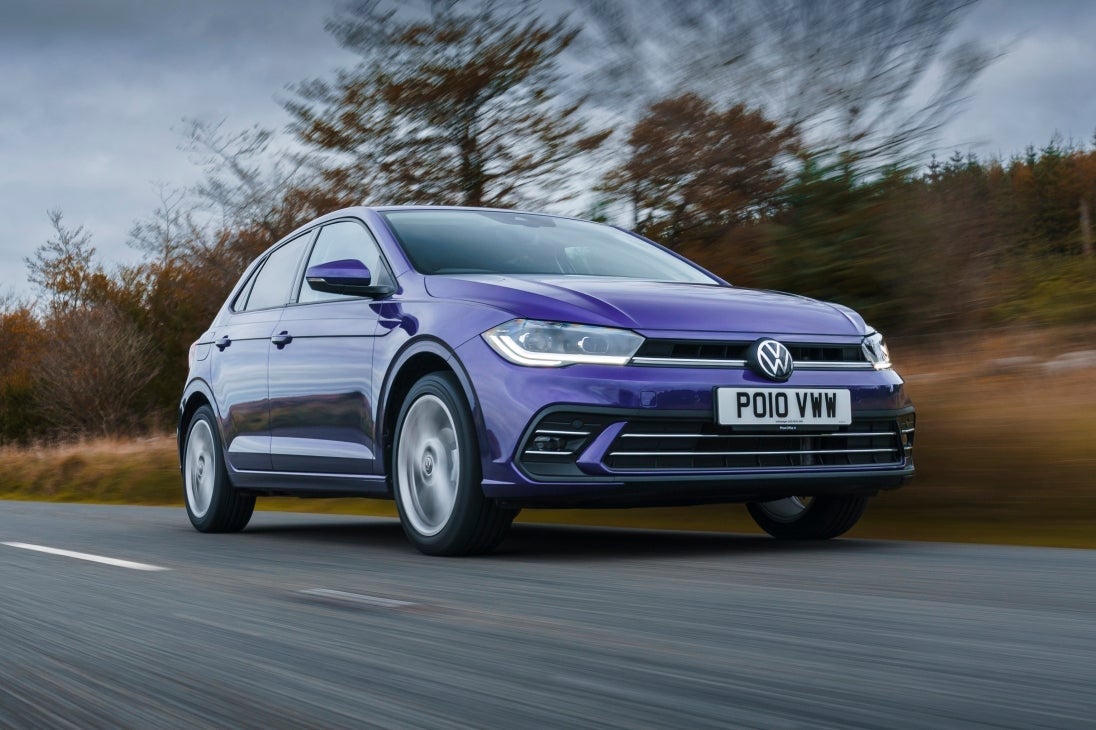Volkswagen Polo Review 2025: Price, specs & boot space
Written by Andrew Brady
Quick overview
Pros
- More than ample cabin space
- Superb refinement and ride
- Feels solid and built to last
Cons
- Pricier than most rivals
- Not as sharp to drive as a Fiesta
- Facelifted model's cabin controls are more fiddly
Overall verdict on the Volkswagen Polo
"The sixth-generation Volkswagen Polo is still at the top of the small car tree. Yes, it's not the best value offering, but as a grown-up small car that's almost as comfortable, spacious and classy as a car from the class above it can't be beaten. The VW Polo was facelifted in 2021, and in this review we'll show why it's about as good as small cars get."
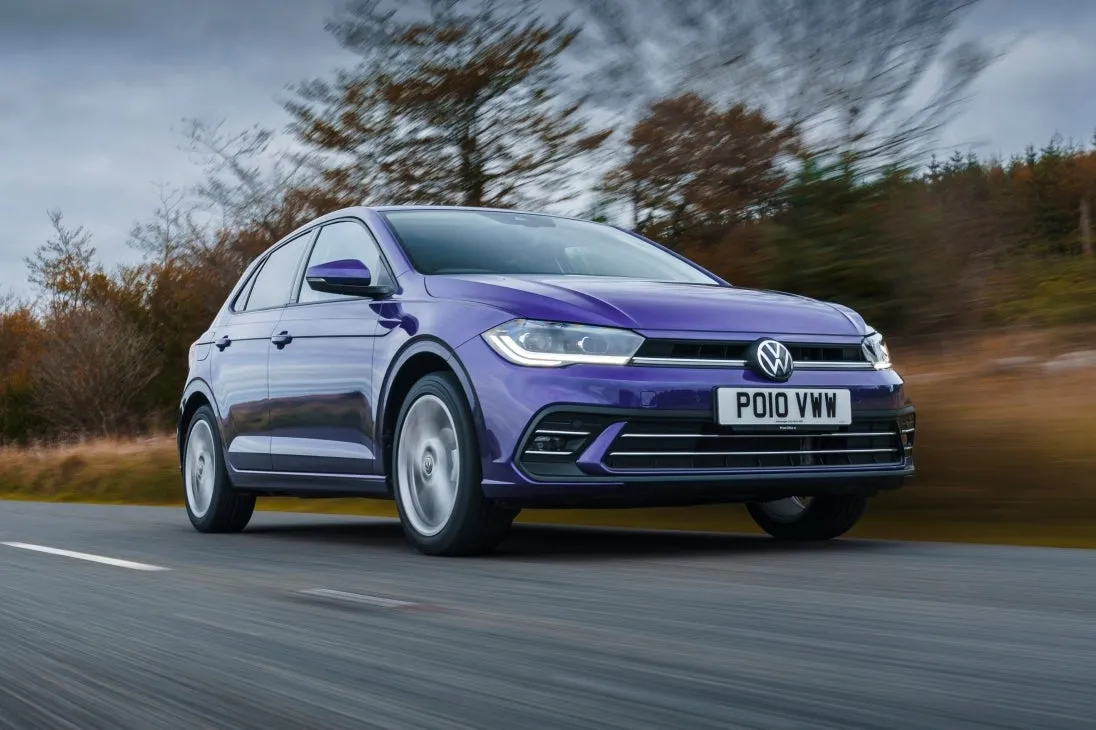
For as many years as the Volkswagen Golf has been a default choice for many in the family hatchback class, the same has applied to the Polo in the small car class. The latest Polo is the most complete yet and is one of our favourite small car - but is the competition closing in? We'll find out in this review.
Mechanically speaking, the Volkswagen Polo is pretty much identical to the latest SEAT Ibiza and Skoda Fabia. However, while it uses the same platform and engines as its Spanish and Czech stablemates, the Polo feels distinctly more upmarket, with higher quality cabin materials and better soundproofing.
The cabin is one of the most spacious and practical of any small hatchback, with a Tardis-like interior that provides comfortable transport for up to four large adults. We found that people assumed it was a Golf when stepping inside, and that's as about big a complement as you can get at this price point.
The boot is huge, too, and far superior to anything you’ll find in the Vauxhall Corsa or Ford Fiesta when the rear seats are in place. In fact, with 351-litres on offer, the Polo is only a shopping bag short on the 381-litres you get in its big brother, the Golf. Only the latest Fabia gets more luggage capacity in this class.
For the 2021 mid-life facelift, the Volkswagen Polo received revisions including a tweaked exterior with inspiration taken from the latest Golf, LED headlights as standard (with Matrix LEDs available from mid spec), digital instruments as standard and new touch-sensitive cabin switchgear.
There's were further tech upgrades including adaptive cruise control with Travel Assist as standard from mid-spec models. That means the Polo will essentially steer, accelerate and brake for you on the motorway and in lower-speed traffic - a useful bonus for long commutes and something you'll struggle to find elsewhere on a small car. You also get autonomous emergency braking on every model, and with the Polo having a five-star Euro NCAP rating it's pretty much as safe as small cars get.
The Polo isn't as fun or as involving to drive as a Fiesta or Mazda 2, however, with its steering lacking weight and sharpness and there's a bit more body lean. But, the Volkswagen is composed and predictable in its handling, while its refined and quiet nature give it the feel of a much larger car on the motorway. The suspension absorbs most road imperfections, but cars on larger 17- and 18-inch wheels will still transfer a few lumps and bumps into the cabin.
The best engine in the range is the 1.0 TSI petrol - and it's now the only option for new buyers. In our view, it's one of the best turbocharged three-cylinder petrol engines you can buy, with lively performance and real-world economy exceeding 50mpg. A performance-focused GTI model is also available, with a 2.0 TSI engine and 200PS. Only those covering long distances on a daily basis will need to consider the 1.6 TDI diesel, which is no longer offered on the 2021-on Polo due to slow sales.
Efficient, comfortable and practical, the Polo is very Golf-like and sets a high bar for the once humble supermini sector. Admittedly, the Fiesta and Ibiza nudge ahead on driver involvement and value, with both getting better levels of standard equipment for similar money, but the classy Polo is an easy car to recommend new or used for those who don't mind paying a little more for comfort and refinement.
Looking for a used car for sale? We've got 100s of Volkswagen Approved Used Cars for Sale for you to choose from, including a wide range of VW Polos for sale. If you're looking for the older version, you need our Volkswagen Polo (2009-2017) review.
Is the Volkswagen Polo right for you?
The Volkswagen Polo is as close as you get in the supermini sector to a one-car-does-it-all policy. This is thanks to the Polo scoring well in every area where a compact hatchback must, as well in some areas where they are usually not so strong.
Among those strengths of the Polo that most of its rivals cannot match are the amount of cabin space it offers. The interior is also a cut above when it comes to the quality of its materials and construction, giving the feel of a premium car that only the Audi A1 and MINI hatch are on a par with.
All of this space, comfort and quality comes at a price that’s a little higher than most of its rivals, yet the Volkswagen Polo is worth it. This is reflected in strong used values that mean you don’t lose out when buying a new Polo either outright or with a finance deal.
If you do need a bit more practicality, why not check out the similarly sized (but taller and slightly roomier) Volkswagen T-Cross? It's largely the same car underneath, too.
What other cars are similar to the Volkswagen Polo?
The biggest threat to the Volkswagen Polo was the Ford Fiesta when it was offered new, and the Fiesta remains a threat in the used market. This pair have been going head to head for years and the Fiesta has an edge when it comes to driving fun. The Ford was also available as a three-door, which some used buyers will prefer.
Vauxhall’s Corsa is another serious rival to the Polo and has a wide variety of trims and engines to choose from, as well as an all-electric version. You should also consider the SEAT Ibiza for its all-round talents, while the Audi A1 and MINI Hatch give the Polo serious competition for who has the classiest cabin atmosphere.
But perhaps the Polo's biggest thorn in its side is the new Skoda Fabia. While it's not as posh inside, it gets the same engines and platform, more space and practical features, most of the Polo's tech and you'll save a good chunk of cash going for one. And don't rule out the and Hyundai i20.
Comfort and design: Volkswagen Polo interior
"There's nearly as much space in the Volkswagen Polo as there is in cars from the class above, while you get plenty of tech and a feeling of quality."
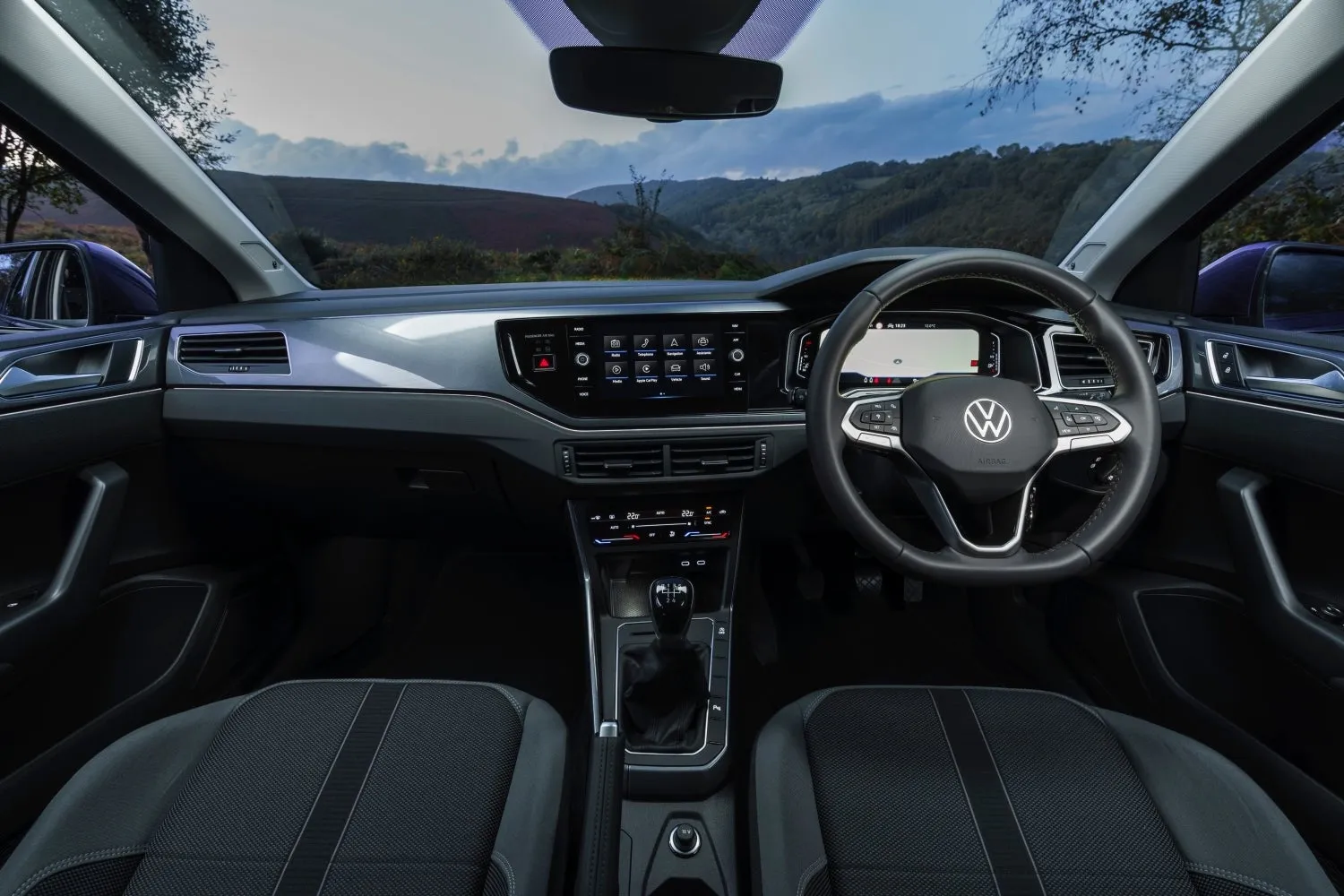
The VW Polo's driver’s seat has standard height adjustment on all versions and the steering wheel can be altered for height and depth, so find the perfect seating position is very simple. Whether you're short, tall, large or slim, you should be able to get comfortable.
Once you’ve honed this to your ideal seat placing, you will find the Polo also provides ample vision in all directions for the driver. Even the rear three-quarters view that is often limited by thick rear pillars in most superminis is better in the Volkswagen thanks to small additional windows let into the metal to improve sight lines.
The feeling of space inside the Polo is accentuated by lots of head, leg and shoulder space for those in the front. You’ll also find the seat gives support in all the right places for day-long comfort. When you first sit in the car, the cushions can seem a touch on the firm side, but this is much better than them being all squashy. The result is the Volkswagen’s pews keep you comfortable and held in the right place without pinching.
As a five-door only, the front doors can be opened wider than its three-door rivals to help with entry and exit in tighter parking spots. You’ll also appreciate the way Volkswagen arranges all of the controls, which have a satisfyingly solid action and are all easy to use when driving. We especially like the rotary dials for the heating that mean you don’t have to take your eyes off the road to adjust the cabin temperature.
Or, rather, we did. As part of the 2021 update Volkswagen has brought in touch-sensitive climate control switches. They're easier to use than they are in the Golf - partly as VW has actually bothered to light them up - but still fiddlier than a simple set of physical buttons, particularly when you're also driving. Desperate to avoid these? Go for the entry-level Polo Life which still has traditional air-con knobs.
Quality and finish
This is the area where the Volkswagen Polo pulls out a very clear lead over its rivals. Everywhere your eyes or hands come to rest, the Polo’s interior reeks of build quality that is a cut above the common herd of superminis. There are thickly padded surfaces on the dash-top and doors, while the other areas such as the door handles and steering wheel enjoy a classy feel most of the competition just cannot get close to.
The same is true when you reach further down in the Polo, so even the seat bases and door pockets have neatly returned, smooth edges. All of this is underpinned by careful build quality that means there’s no risk of a rattle or squeak interrupting the cabin’s harmony. If anything, Volkswagen has hit this particular nail on the head with a good deal more accuracy and success than its cousin, the Audi A1, which is as much an accolade for the Polo as it is a concern for the Audi.
Rounding off the Polo’s impressive showing for its build quality is the easy to use infotainment screen and customisable 8.0-inch 'Digital Cockpit' instrument display that comes as standard in all models.
Infotainment: Touchscreen, USB, nav and stereo in the Volkswagen Polo
For the 2021 facelift the Volkswagen Polo received key tech upgrades which boosted the standard equipment levels. Every version now gets not only an 8.0-inch touchscreen and also a 'Digital Cockpit' instrument display.
Granted, on entry-level cars the latter is only eight inches and not all that configurable, but step up to Style trim and you get a 10.25-inch high-res display with more customisable menus and info, called Digital Cockpit Pro. It's a great setup and remains the benchmark for digital instruments in the class.
In terms of the central touchscreen, entry-level Life models get an eight-inch display with smartphone connectivity including Apple CarPlay and Android Auto. You also get a DAB radio, Bluetooth, Wireless App Connect, six speakers and USB-C ports in the front and rear. It's a decent system, particularly for the entry point of the range. Style trim brings sat-nav as standard.
The new touchscreen has fresher graphics than before and remains pretty easy to get on with, with a decent response from the interface and touch-sensitive shortcut buttons around the side for easy access to menus. You can option a larger 9.2-inch screen, but it's not all that necessary.
When it comes to the sound system, the standard six-speaker set-up is decent enough for most people's needs. It's not outstanding, though, so the Beats upgrade which brings a subwoofer and better quality speakers might be an option box worth ticking.
Pre-2021 facelift cars used an 8.0-inch infotainment touchscreen that is common across a lot of Volkswagen Group models. It's easy to use, if not as quick or flashy as some.
Space and practicality: Volkswagen Polo boot space
Out of all the cars in the supermini class, only the Kia Rio and latest Skoda Fabia can come close to matching the Volkswagen Polo for rear seat space. The German car is truly generous in the amount of room it offers and a pair of taller adults can easily sit back here in complete comfort, which is not something you can say of many superminis or even a number of cars from the class above.
Access to the rear seats is good through the back doors as they swing open to almost 90-degrees. The aperture is large and offers sufficient room to lift your legs in without any acrobatics. Once in, the bench is fine for two but the raised centre section makes it uncomfortable for anyone in the middle pew unless they are very small. Still, all three rear occupants get a three-point seat belt and there are twin Isofix mounts for child seats in either outer chair.
As well as excellent room for shoulders, the Polo is notable for the amount of knee and head space it offers its rear passengers. Add in the window line being lower and not sweeping upwards as it goes back like so many superminis and the Polo’s rear quarters enjoy an airy, open feel that is ideal when carting the kids on a long journey. They will also be able to stash their toys in reasonably large door bins or the pockets set into the backs of the front seats.
For bigger items, the Volkswagen Polo’s boot is among the more generous in the sector. With 351-litres of capacity on offer in normal use, the Polo’s cargo bay is not far short of that of the Golf’s. It’s also well shaped to make fitting in bigger items very easy through the large tailgate opening and lower than class norm load sill.
Volkswagen provides a 60/40 split and tumble back seat in all but the (pre-facelift) base S trims, which makes do with a single-piece back seat. With the back seats both dropped down, the Polo opens up to a maximum of 1019-litres, again making it more spacious than most in the class.
There is a slight step in the load floor when the rear seats are folded, but Volkswagen provides a filler piece to bridge the gap that helps here. However, when tipped down, the rear seats do not fold flat, which can make it trickier when pushing bulkier boxes into the boot.
What shows how well packaged the VW Polo is is that its exterior dimensions are about average for the class. At 4,053mm long, 1,751mm wide and 1,433mm tall it's only sightly larger than the Ford Fiesta, and smaller than the Vauxhall Corsa/Peugeot 208.
Handling and ride quality: What is the Volkswagen Polo like to drive?
"The Volkswagen Polo might not be as fun to drive as some of its rivals, but it's a comfortable and refined companion over long distances. It's also silky smooth on the motorway, with virtually no road or wind noise making its way into the cabin."
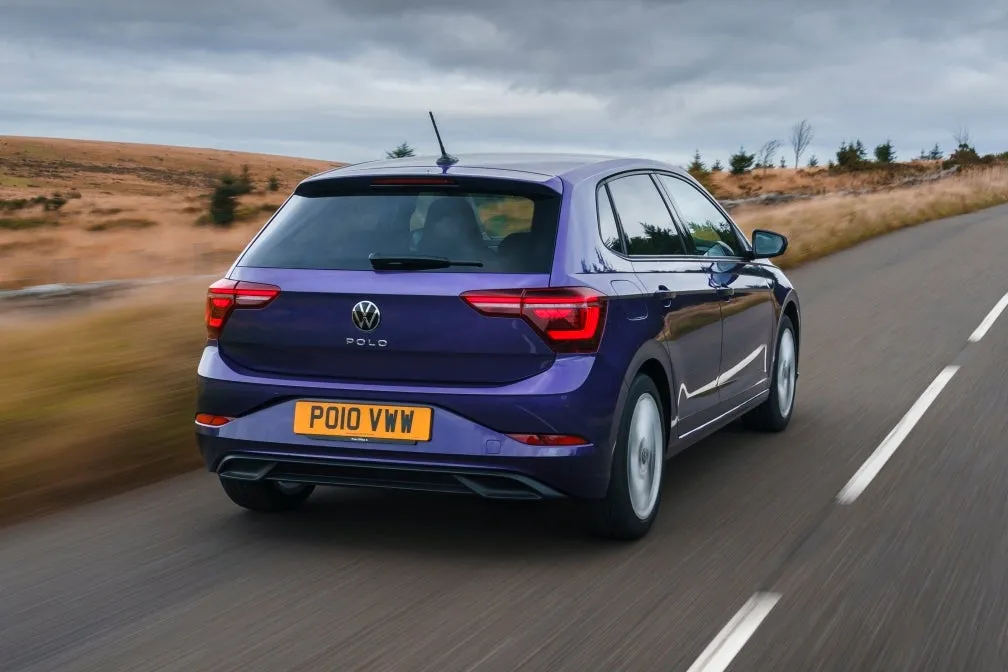
The VW Polo's steering doesn't have the same weight or feedback as that of Fiesta, but it's an easy car to use on a daily basis and the handling is accurate and predictable. If that sounds like we’re damning it with faint praise, that is not the case. Instead, we’d say Volkswagen has judged the Polo to perfection for its intended buyers who will value ease of use and consistency of feel over the more overtly sporty feedback of the Ford Fiesta.
In town, the Polo is nimble so you can guide it into a small parking space or perform a tight turn without having to make lots of annoying small corrections. Even without front parking sensors fitted on base versions (rear ones are standard across the range now), it’s easy to guide into a bay thanks to the short rear overhang and good vision out of the rear window.
At roughly four metres long, the Polo is larger than its predecessor and only slightly shorter than the fourth-generation Golf, but it still has the feel of a small car, with light steering and responsive pedals that only require a deft touch. Unfortunately, parking sensors are only fitted as standard to cars in high-level SEL trim before the 2021 facelift, whereas all new Pols have rear parking sensors. The Match trim adds a reversing camera, while the Style and R-Line have front parking sensors too.
The suspension is supple and cars on 15-inch or 16-inch wheels will provide a soft and comfortable ride quality on British roads. Even the high-level R-Line trim gets modest 16-inch wheels as standard. The Polo can also be specified with 17-inch or 18-inch wheels, but these convey more bumps and lumps into the cabin and should be avoided by those who prioritise comfort over style.
What engines and gearboxes are available in the Volkswagen Polo?
The Volkswagen Polo has some of the best petrol engines in the business. The most popular is the turbocharged 1.0-litre TSI petrol with 95- or 115PS, which returns official consumption of up to 54.3mpg and maximum 127g/km of CO2 i our preferred 95PS output.
It's surprisingly refined for a three-cylinder unit and doesn't have any of the traditional rattles or vibrations that you get with most small petrol engines. A five-speed manual gearbox is fitted as standard and, although the long ratios do take getting used to, the engine is flexible enough to mitigate it feeling underpowered.
The 1.0 TSI can also be specified with 110PS (reduced from 115PS with the 2021 facelift) which gets a six-speed manual. Official economy is 50.4mpg and emissions are 128g/km for the R-Line that is the only new Polo rim to use this motor, which also comes with a seven-speed DSG auto as standard. All versions of the 1.0 TSI engine can be fitted with an optional seven-speed DSG automatic.
A non-turbocharged version of the 1.0-litre engine is available with 80PS, but it’s not recommended owing to the fact that it's quite noisy and slow in comparison to the TSI. We'd only go for it if you're only doing low-speed driving or if you're a young driver limited by high insurance costs.
Diesel options were limited to a single 1.6 TDI, with 95PS, which replaced the previous 80- and 90PS versions. It was only offered in the SEL trim and only with a five-speed manual gearbox. It'll deliver impressive motorway economy and decent performance, but its cost and reduced refinement compared to the petrols means very few people bought one. Unsurprisingly, Volkswagen echoed this sentiment and dropped the diesel for the 2021 facelift.
Refinement and noise levels
The three-cylinder petrol engines used in the Volkswagen Polo are all very unassuming when it comes to noise interference at typical driving speeds. They can be heard when working them hard to get up to speed, but they remain smooth and more at ease aurally than most of their competitors. Even when they can be heard, it’s a pleasant offbeat three-cylinder hum rather than anything coarse or jarring. The non-turbo version is a bit more vocal, largely because it needs to be worked hard most of the time.
Switch to the four-cylinder diesel engine if you're buying used and it’s a different matter. It has a rattle of the farmyard about its refinement, or shortage of it. At cruising pace on the motorway, it’s fine, but using it in town or to accelerate harder shows up a noisy character that is at odds with the rest of the Polo’s sophisticated manners.
This is thrown into sharper focus as the Polo refuses to let much in the way of wind or road noise enter the cabin in most versions. However, if you take one of the higher trim versions that sit on bigger alloy wheels, some din from the tyres as they pass over the road’s surface is kicked up and into the cabin, though it’s still not as rowdy as most of the Polo’s rival superminis.
Safety equipment: How safe is the Volkswagen Polo?
Before the 2021 facelift the VW Polo was already pretty much class-leading on the safety front. Automatic emergency braking with pedestrian detection, a post-collision braking system and a driver alertness detection to warn you if your concentration is fading and you need a break were standard on every model.
With a new Polo, you now get lane assist across the range for starters, but more importantly every Polo except the non-turbo 80PS model gets adaptive cruise control with Travel Assist. This allows semi-automated driving: the car will smoothly steer you within your lane as well as braking and accelerating. There’s also the option of plain old cruise control, and a rear-view camera. Park Assist helps parallel park the Polo into a bay by working the steering while the driver takes care of the accelerator and brake pedals.
The standard safety kit in 2017 earned the Polo a five-star Euro NCAP safety rating in 2017, with a superb 96 per cent rating for adult occupant safety and 85 per cent score for child occupant safety. Bear in mind that the standards have moved on further since then, but the facelift has brought additional safety kit which should keep it up to the maximum standard.
To avoid low-speed parking dings there are front and rear parking sensors as standard on Style trim, while options include a rear-view camera, blind spot detection, rear cross traffic alert and Park Assist. The Match comes with a reversing camera includes, while the base Life version makes do with just rear parking sensors.
MPG and fuel costs: What does a Volkswagen Polo cost to run?
"No Volkswagen Polo is exactly thirsty. The petrol engines manage around 50mpg, with the pre-facelift diesel nudging 60mpg."
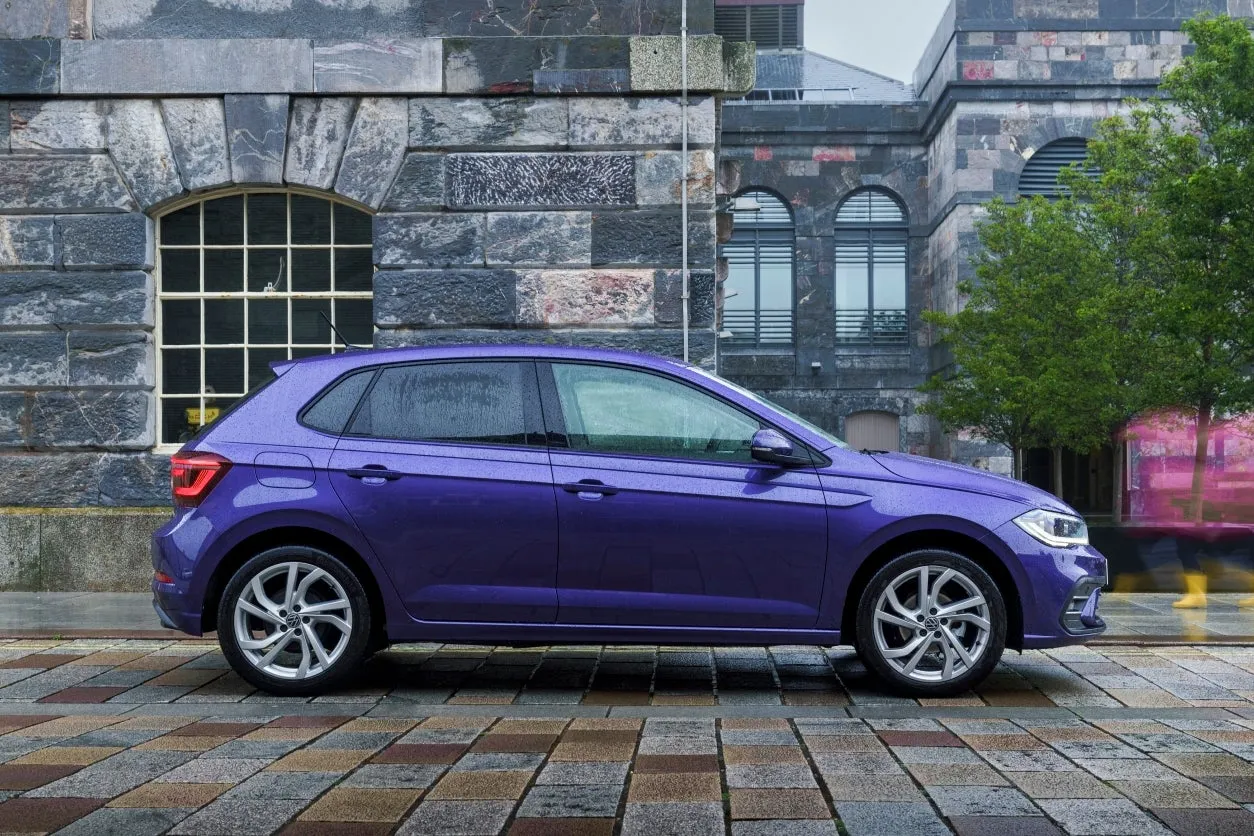
The most economical Volkswagen Polo is the 1.6-litre TDI diesel motor that returns an official maximum combined consumption of 57.6mpg. That’s decent but not class beating and few will choose the diesel, so the best of 54.3mpg offered by the 1.0 TSI turbo petrol is more representative of what most Polo drivers can expect.
In Real MPG conditions, we’ve found this engine achieves 52.4mpg. The non-turbo 1.0-litre 80PS engine also gives 51.4mpg at its most efficient in the combined WLTP tests. In Real MPG terms, this works out at around 50mpg to make it easy on the wallet.
Take the 115PS 1.0 TSI engine and it offers 50.4mpg, which is decent given it also comes with a seven-speed DSG automatic gearbox as standard.
How reliable is the Volkswagen Polo?
Volkswagen was 21st out of 29 brands in the latest 2023 HonestJohn.co.uk Satisfaction Index. Owners find the cars dependable and well-made, with over 87% of owners saying they're satisfied overall.
The VW Polo has been on sale for a number of years now with no major issues reported. All of the engines are well-proven, while the relatively simple mechanicals should mean the Polo is a dependable car. Having said that, there is a lot of technology on board these days, so it might have a few more software glitches than Polos of old.
Insurance groups and costs
Choose the Volkswagen Polo with the 1.0 80PS (or the rather gutless earlier 65PS) non-turbo petrol engine and you could enjoy insurance premiums based on the lowest group 1 banding. This depends on which trim level you opt for, but it still makes the Polo one of the cheapest superminis to get cover for.
A 95PS 1.0 TSI SE model falls into a reasonable group 8 for insurance purposes, while the most expensive non-GTI model to get cover for is the 115PS 1.0 TSI R Line version that sits in group 10. None should be particularly pricey, although young drivers are best opting for lesser engines and trims.
VED car tax: What is the annual road tax on a Volkswagen Polo?
All new Volkswagen Polos will pay £220 for the first year of road tax as their CO2 emissions fall between 118- and 128g/km. After that, you'll pay the standard £190 per year for VED.
The most expensive of all Polos for road tax is, unsurprisingly, the Polo GTI, with CO2 emissions of 155g/km meaning a hefty £680 charge for the first year's VED.
How much should you be paying for a used Volkswagen Polo?
"A used Volkswagen Polo from early on in this generation’s life cycle in 2017 will come in at around £900 for a car with 60,000 miles. This will be for one of the more basic trims and with the less powerful petrol engines."
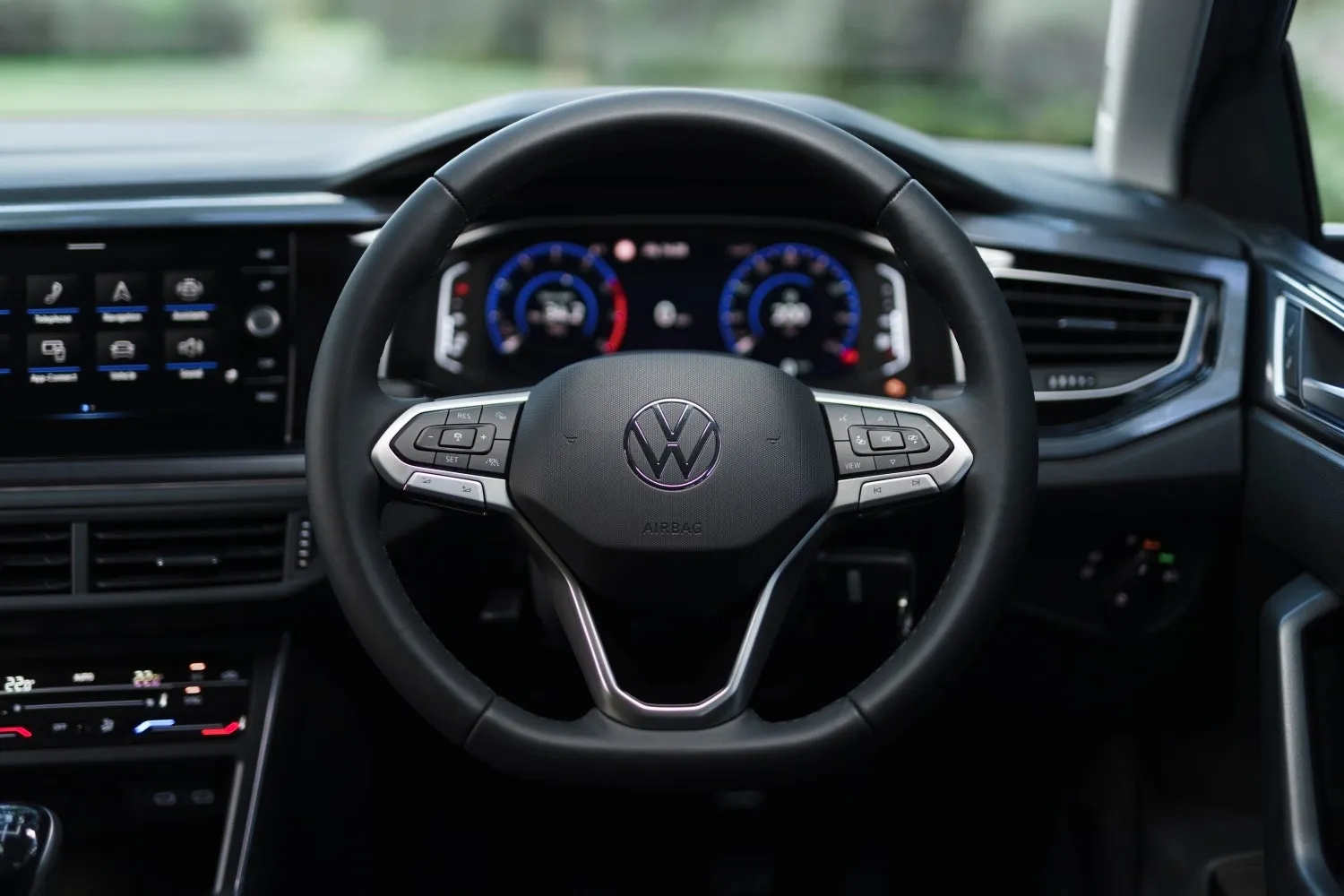
Seek out a tree-year old 95PS 1.0 TSI Match and you’ll pay around £13,500, which shows how well the Polo hangs on to its value in the used market.
Look for a nearly new or pre-registered Polo in the same specification and you’ll be paying approximately £19,000, which is a £2000 saving over a brand new version.
Trim levels and standard equipment
The 2021-on Volkswagen Polo received a simplified trim structure and more standard equipment across the range. The previous entry-level S trim is effectively gone, and you can think of the now cheapest Life trim as being a bit like the old SE model.
Standard kit on the VW Polo Life includes automatic LED headlights, 15-inch alloy wheels, air-con, electrically folding and heated mirrors, a front centre armrest, leather steering wheel and gearlever, an eight-inch touchscreen with DAB radio and Wireless App Connect, digital instruments, rear electric windows, height adjustable front seats and a suite of driver assist tech.
Above this sits the Match that has 16-inch alloy wheels, rear privacy glass, reversing camera, wireless phone charging, and the 8.0-inch Digital Cockpit dash.
Upgrading to the VW Polo Style brings Matrix LED headlights, 16-inch alloy wheels and upgraded exterior detailing, ambient lighting, front and rear parking sensors, sports comfort front seats with adjustable lumbar support, two-zone climate control, sat-nav, LED rear lights and adaptive cruise control with Travel Assist. You also get the larger Digital Cockpit Pro instrument display.
Topping the standard range (below the Polo GTI) is the VW Polo R-Line. This gets 16-inch alloys, tinted glass, Light Assist, stainless steel pedals, black roof lining, decorative dash inserts, R-Line door sills and special R-Line upholstery.
Ask the heycar experts: common questions
Is the Volkswagen Polo a good car?
Which Volkswagen Polo model is best?
How much is a Volkswagen Polo in the UK?
Get our latest advice, news and offers
Keep me updated by email with the latest advice, news and offers from heycar.
By submitting you agree to our privacy policy
